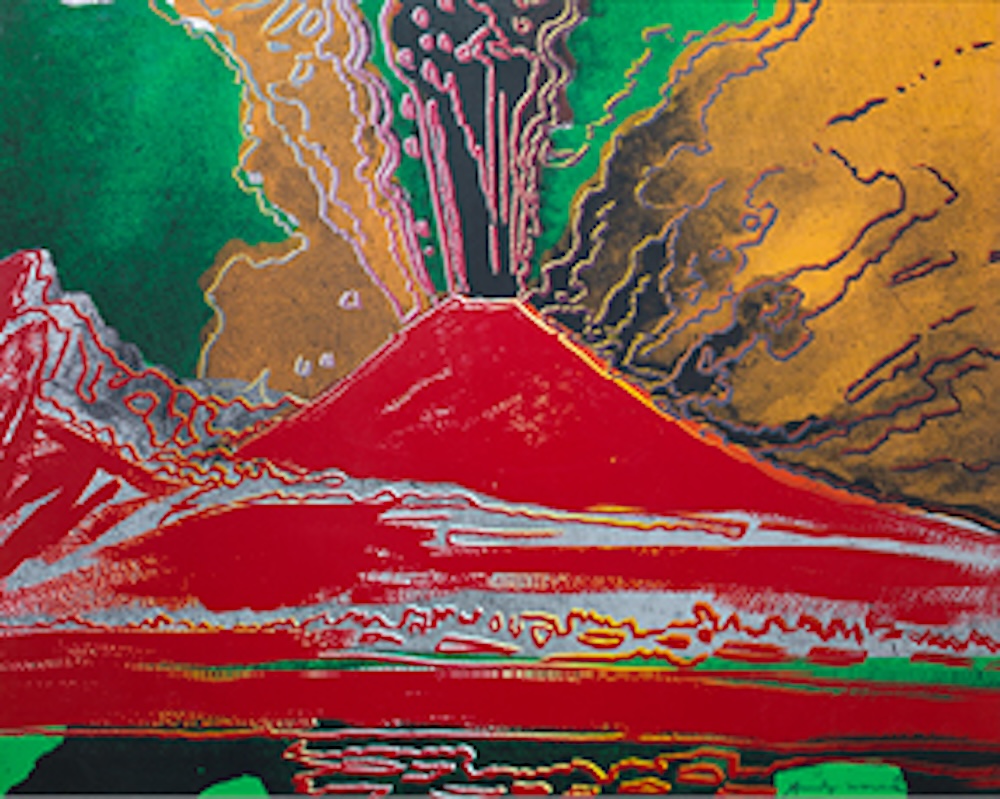Andy Warhol’s Triple Elvis is part of Vitalità del Tempo (Vitality of Time), an exhibition cycle curated by Luca Massimo Barbero for Intesa Sanpaolo Gallerie d’Italia, that presents previously unseen works from the Intesa Sanpaolo Collection of 20th century art.
Born and raised in Pittsburgh from migrant parents, Andy Warhol initially pursued a successful career as a commercial illustrator until the end of the 1950’s, when he started becoming interested in the art world and in being perceived as an artist. Rejecting the dominant painting and sculpting modes of his day, Warhol soon embraced silk-screen printmaking to investigate the relationship between artistic expression, advertising, and celebrity culture that was flourishing at the beginning of the 1960s.

As the exhibition’s title suggests, among Warhol’s silkscreen paintings of the early 1960’s, Triple Elvis is a particularly significant work, as it represents Warhol’s revolutionary shift towards Pop Art icons, tools and techniques. The exhibition allows an exceptional opportunity to experience the nearly seven-foot-tall image Elvis Presley in person.
As Warhol was fascinated by popular and celebrity culture, Elvis undeniably represents the ultimate subject for the artist, even more than his iconic explorations of Marilyn Monroe and Elizabeth Taylor, and there is an enormous number of works dedicated to Elvis realised by Warhol between 1962 and 1963.
The son of a truck driver and convicted petty thief, the American singer and composer also known as “The King” was both a product of Hollywood and an iconic representation of the American Dream. In Triple Elvis, Warhol uses an image of Elvis as a cowboy, paying homage both to an already existing American icon, and to Hollywood’s propensity for adulation of celebrities.

Pedicini, Napoli © The Andy Warhol Foundation for the Visual Arts, Inc. by SIAE 2024
Unlike the earlier images of Elvis produced by Warhol, such as Red Elvis in 1962, for Triple Elvis he selected a publicity image from a movie (Flaming Star, directed by Don Siegel), which shows a gun-wielding Elvis against a silver background, a reference to the silver screen of cinema.
However, there are more profound reasons behind this radical turn in Warhol’s practice. Silver is not just a colour: it recalls splendour and glamour, while being also reminiscent of religious adornment and architecture. Elvis and the other celebrities portrayed in his silkscreen prints, are meant to represent the sparkling new gods of a secular age, and it is therefore appropriate that their iconic figures were embedded on a silver background. Interestingly, Warhol’s famous studio in New York City, the Factory, was also completely coated with silver paint and foil, so as to present the artist’ studio as a sort of new secular temple.

Taking his idols from movie screen to silkscreen, the works on view at Gallerie d’Italia in Naples are also the first in which the American artist made a more conscious use of repetition, a strategy that becomes even more important in his later works. Reminiscent of a film strip, the use of individual frames containing a single image overlap so that, when viewed together, they produce a sense of dynamism and movement, capable of recalling the effects of the moving image.
Andy Warhol. Triple Elvis, 25th September 2024 – 16th February 2025 Gallerie d’Italia Naples







